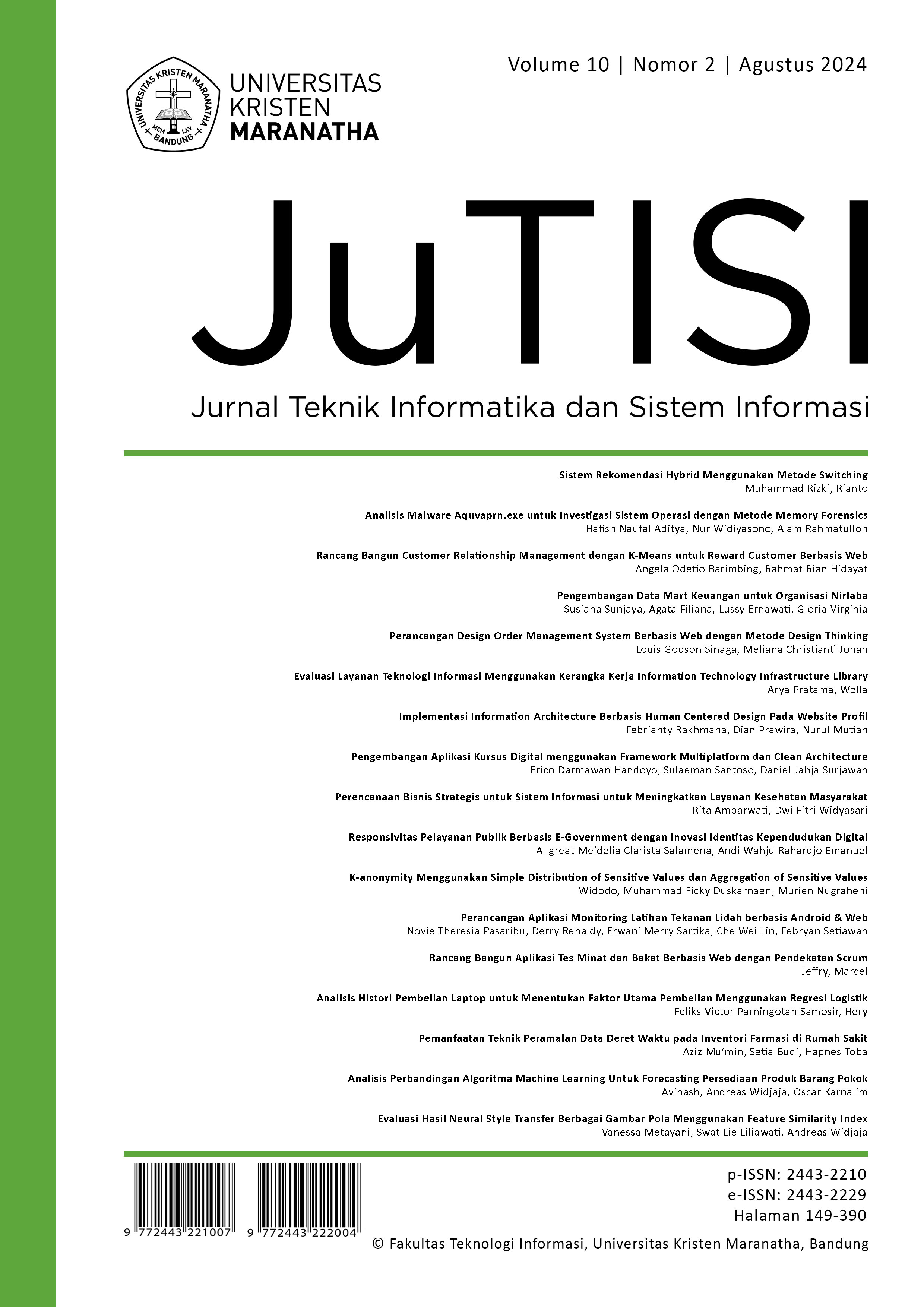Comparative Analysis Of Machine Learning Algorithms For Forecasting Of Basic Goods Products
Main Article Content
Abstract
Abstract —In the era of continuously evolving technology, consumers' demands for everyday needs are becoming more complex.Retail companies must adopt sophisticated approaches to understand and meet consumer preferences. This research explores theeffectiveness of Machine Learning algorithms in forecasting inventory levels in various types of retail stores using historicaltransaction payment data and related variables. One approach used is data transformation using one standard deviation intervalto stationarize data, ensuring statistical consistency that is important for prediction algorithms. The research results show that theSeasonal Autoregressive Integrated Moving Average (SARIMA) algorithm performs best in predicting inventory levels for bothSMEs and modern retailers. For the original data, the Mean Absolute Percentage Error (MAPE) for SMEs is 1.11% and formodern retailers is 0.98%. For data modified with one standard deviation interval, the MAPE for SMEs is 0.74% and for modernretailers is 0.70%. These results indicate superior prediction accuracy, helping companies adjust their inventory levels moreaccurately according to market dynamics and consumer expectations. This research is expected to provide a solid guideline forimproving inventory management strategies, enabling companies to prepare inventory levels more accurately according to marketdynamics and consumer expectations.Keywords—Forecasting Optimization, Machine Learning Algorithm Comparison, Inventory Levels, Modern Retail, SMEs, Onestandard deviation interval
Downloads
Download data is not yet available.
Article Details
How to Cite
[1]
A. Avinash, A. Widjaja, and O. Karnalim, “Comparative Analysis Of Machine Learning Algorithms For Forecasting Of Basic Goods Products”, JuTISI, vol. 10, no. 2, pp. 361 –, Aug. 2024.
Section
Articles

This work is licensed under a Creative Commons Attribution-NonCommercial 4.0 International License.
This is an open-access article distributed under the terms of the Creative Commons Attribution-NonCommercial 4.0 International License (https://creativecommons.org/licenses/by-nc/4.0/) which permits unrestricted non-commercial used, distribution and reproduction in any medium.
This work is licensed under a Creative Commons Attribution-NonCommercial 4.0 International License.

